Frequently Asked Questions
These are the questions most frequently asked by people having to be certified for their job. If you have a question which is not answered here, do not hesitate to contact our Training Coordinator at 613-741 1128.
How can I register for courses?
You can register by phone at 613-741 1128 OR email: safetytr@labortek.com.
What can I do if I feel I am being asked to perform unsafe work?
There are several things that can be done but the first thing you should do is to refer to The Occupational Health and Safety Act and Regulations in your work related field.
What are some of the clients that Labortek Safety Training has trained for?
Labortek Safety Training has provided safety training for private companies as well many government agencies including Public Works and RCMP just to name a few, with over 50,000 people trained over our ten years in the industry.
All of our courses vary but they can range from one and a half hours to two full days.
Will Labortek Safety instructors come to our facility to do training?
Yes. We offer on-site and off-site training.
How do I know that the courses that I take are of standard for my industry?
LaborTek Safety has and will always follow the appropriate CSA guidelines, Provincial and Federal legislation that applies for each course.
How do I know that what I learn will help me in my field?
All of LaborTek courses are kept current and up to date with the corresponding legislation. We follow e-laws and even re-develop our courses prior to new legislation implementation to ensure that the content meets with today’s challenging work force.
If I am not sure what courses I need for my industry, who can I contact to find out?
You can always check out e-laws, C.S.A.O. or call us and ask to speak to one of our highly trained instructors.
If my company wants one of your instructors to go out of Ontario to give us a course, will or can they do this?
Yes, LaborTek Safety Training has gone out of province to provide courses. Contact us for further details.
Does LaborTek Safety Training offer on-line courses?
LaborTek Safety is very proud to now offer three on-line courses and expect to offer more in the future. From the drop down menu you have a link to our on-line courses. All you have to do is register.
After I have taken a WHMIS course, do I have to take another one yearly?
You do not have to in the present legislation. However, some companies have made it their company policy to have refresher training. If you work for one of these companies you will have to follow their policies.
Hard hats do not expire. However, depending on the manufacture, they may have a recommended work life and a manufacture date. CSA also recommends that ALL hard hats come with information. Check with these when you receive a new hard hat.
When do we need a Health and Safety Representative or a Health and Safety Committee?
When a work place exceeds five people, the workers must elect one worker to perform Health and Safety duties. A Health and Safety Committee must be elected where there are more than twenty employees on a regular basis. For further information, refer to the appropriate Occupational Health and Safety Act and Regulation for your industry. Our Safety Consulting Division can help you set-up and staff your Health and Safety Committee. This is one of the safety consulting services that wer offer
When do I have to have a Supervisor with me on the job.
Under the Occupational Health and Safety Act and Regulations for all industries, it says that under section 25,2(a) provide information, instruction and supervision to a worker to protect the health or safety of the worker. They also say under section 25. 2 (c) when appointing a supervisor, appoint a competent person.
What makes a person competent?
A Competent Person in relation to specific work, means a worker who:
1. is qualified because of knowledge, training and experience to perform the work,
2. is familiar with the Occupational Health and Safety Act and with the provisions of the regulations that apply to the work, and
3. has knowledge of all potential or actual danger to health or safety in the work;
Safety training may be required for many issues on your job site. If you are not sure what you require training for, consult the OHSA (green book) for your industry, talk to your supervisor or contact LaborTek Safety Training for legislated training requirements.
When faced with having to help someone in an emergency situation, what should I know?
We suggest that you follow the principles of the Good Samaritan advocated by St John Ambulance in their First Aid Training (First on the Scene – Student Reference Guide – First Edition 2006 –Page 1-2) which are:
You are a Good Samaritan if you help a person when you have no legal duty to do so. As a Good Samaritan, you give your help without being paid, and you give it in good faith (meaning you are helping because you care about the person and not for some other reason). Whenever you help a person in an emergency situation, you should abide by the following principles:
Consent – Identify yourself as a first aider and get permission to help the injured or ill person before you touch them.
Reasonable skill and care – act according to the level of knowledge and skill you have.
Negligence – use common sense and make sure your actions are in the casualty’s best interests.
Abandonment – never abandon a casualty in your care. Stay with them until you hand them over to medical help, you hand them over to another first aider or they don't want your help. This is usually because the problem is no longer an emergency and further care is not needed.
Note that St-John Ambulance is not giving legal advice here. This information is not intended to replace advice given by a lawyer. For more information please refer to Good Samaritan Act, 2001 on e-laws .







